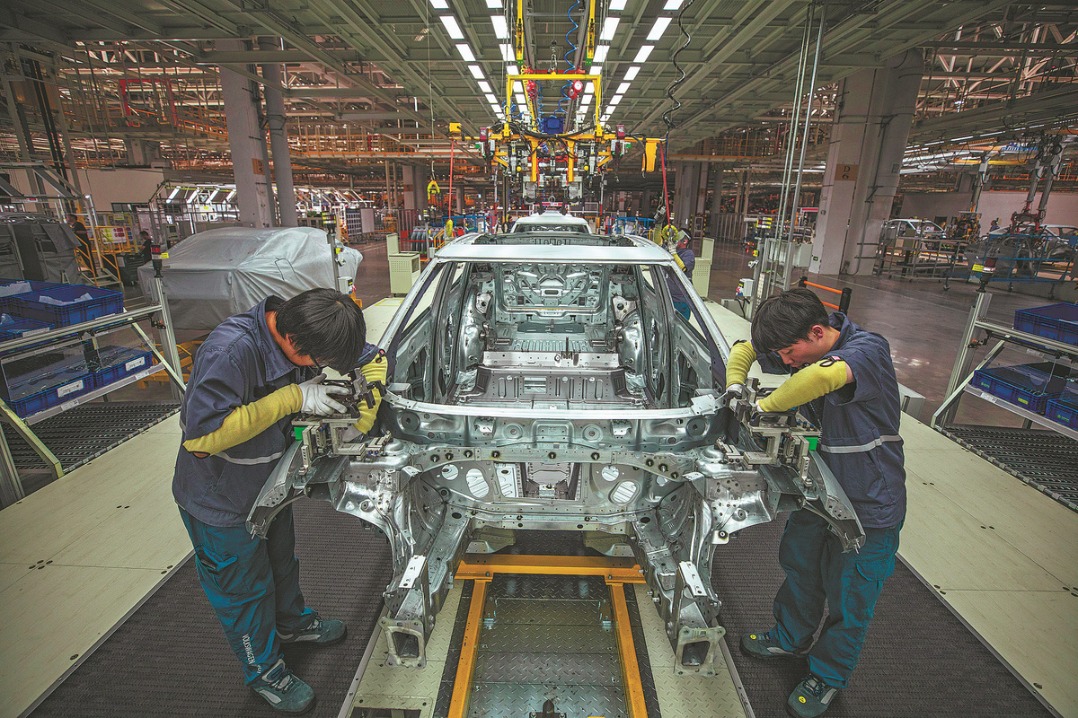Gray alert


Challenges from a rapidly aging population, which are increasing pressure on pension and social security funds and demand for eldercare services, call for immediate actions
The population factor is having a huge impact on China's modernization process. How to properly handle the challenges brought by China's mammoth population and profound changes to its demographic structure has become a major task in the Chinese path to modernization.
According to population data released in 2022, China's population, more than 1.41 billion, accounts for 17.7 percent of the world's total. The nation's population is 4.26 times that of the United States, 3.16 times that of the European Union, 9.75 times that of Russia, and 11.21 times that of Japan.
The gigantic size of the Chinese population apart, China's demographic structure is undergoing profound changes — its elderly population is increasing rapidly — which will exert important influences on the country's modernization process. More importantly, now is the critical period for taking all-round actions to address the problem.
China officially became an "aged society" in 2021, when elderly people (people aged 65 years and above) accounted for 14.2 percent of the total population, and is marching toward becoming a "super-aged society" (when people aged 65 years and above will account for over 20 percent of its population) in an irreversible trend. From a global perspective, from 1990 to 2020, the average annual rate of global elderly population growth stood at 2.5 percent, compared with 3.3 percent in China.
By the end of 2021, China had 267 million people aged 60 and above, of whom more than 200 million people were aged 65 and above — the two cohorts accounted for 23.43 percent and 26.27 percent respectively of the global total in 2020, an evidence of the gigantic size of the Chinese elderly population.
In the meantime, China is witnessing an accelerated pace of population aging and a fast decline in birthrate, which, coupled with high population mobility and estrangement between different generations and neighbors, have turned China from a society of acquaintances into a society of strangers. This has resulted in an irreversible, sustained and sharp decline in the security functions of traditional Chinese families and social mutual aid. And elderly people's demand for maintaining quality of life is growing while their rigid demand for socialized eldercare services is growing exponentially.
The aforementioned changes in China's population structure have multiple impacts on China's modernization process.
Accelerated aging population has put increased pressure on the pension and social security funds and the rigid demand for eldercare services is surging. The Chinese government has to move faster to improve fertility services and child care services, among others, to bring the population growth back to a relatively normal range by helping households strike an easier balance between work and family life and reduce the cost of child care.
Under the current retirement age, China's working-age population has been gradually declining since 2012. In 2022, the number dropped by 6.66 million compared with the previous year and by over 65 million compared with 2011.Despite a seemingly large working-age population, some regions and some industries are increasingly struggling to recruit workers amid labor shortages, underlining the urgent need to adjust mandatory retirement ages and further optimize employment policies.
The dramatic changes in China's demographic structure will inevitably change the nation's consumption structure and then the industrial structure. Economic and social development has to better meet the demands of the rapidly aging population with industrial upgrading and transformation; and the service sector will witness sustained growth. The shrinking working-age population will inevitably lead to an increase in labor costs and a slowdown in human capital improvement, which, if not properly handled, will weigh on economic growth.
The mammoth population, its structural changes, and the complex implications of such changes are major practical problems in China's modernization process that require attention. To this end, the Chinese government has formulated corresponding action plans and taken concrete actions.
To start with, China is implementing a proactive national strategy in response to population aging and gradually integrating it into relevant policy systems. The Central Committee of the Communist Party of China put forth the proactive national strategy in response to population aging in 2020 and made corresponding arrangements in the 14th Five-Year Plan (2021-25) for National Economic and Social Development and the Long-Range Objectives Through the Year 2035 unveiled in 2021. These arrangements are gradually integrated into relevant policy systems.
Second, China is improving the eldercare work mechanism to provide organizational guarantees for implementing the national strategy in response to population aging. In the 2018 institutional reform, the Ministry of Civil Affairs newly set up the department of elderly care services and department of child welfare; in the 2023 institutional reform, the work of the National Working Committee on Aging and the China Association for the Elderly was transferred back to the Ministry of Civil Affairs to enhance the ministry's responsibilities on coordinating, supervising and promoting services for the aging population.
Third, China is moving faster to improve the social security systems. By starting nationwide pooling of basic pension funds, China has pushed the mandatory pension scheme toward becoming more mature and fixed. By improving the medical insurance financing mechanism, unifying the treatment and payment policy and raising the level of overall planning, China has promoted the universal medical insurance system to better benefit the people. By establishing the basic elderly care services system, promoting the coordinated development of the elderly care cause and elderly care industries, and enriching the elderly care services, China has provided a multi-tier, diversified and more accessible elderly care services system for older adults. By setting up the maternity allowance mechanism and strengthening care for children, China has optimized the fertility policies and improved the family-focused policies, among others.
Last, China is adjusting relevant policies to adapt to new changes in the nation's demographic structure. Starting from now, China should postpone the mandatory retirement ages in small steps to delay the average retirement age from the current 54 to above 60 by the midcentury. Greater efforts should be made to tap into the rich pool of talent among older workers, by formulating policies that encourage reemployment of retirees and encourage seniors to get reemployed, start up their own businesses or participate in social activities. More incentive policies should also be rolled out to promote the development of industries that provide products and services for the elderly population, and while satiating the consumption demand of the seniors, develop the "gray-hair economy" into a new growth point of the national economy.
The author is a professor at Renmin University of China and head of the China Association of Social Security. The author contributed this article to China Watch, a think tank powered by China Daily.
The views do not necessarily reflect those of China Daily.

































